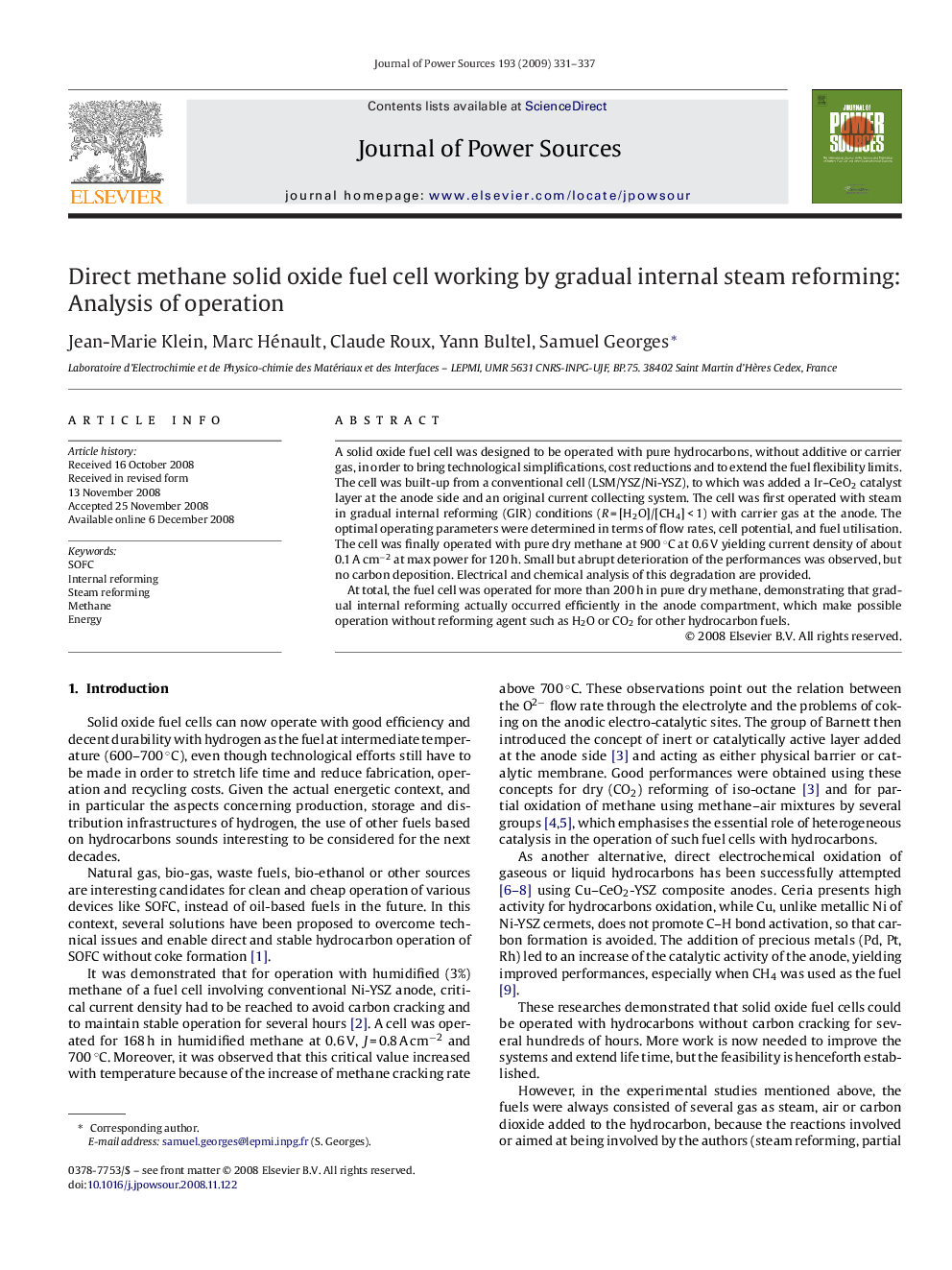| Article ID | Journal | Published Year | Pages | File Type |
|---|---|---|---|---|
| 1289489 | Journal of Power Sources | 2009 | 7 Pages |
A solid oxide fuel cell was designed to be operated with pure hydrocarbons, without additive or carrier gas, in order to bring technological simplifications, cost reductions and to extend the fuel flexibility limits. The cell was built-up from a conventional cell (LSM/YSZ/Ni-YSZ), to which was added a Ir–CeO2 catalyst layer at the anode side and an original current collecting system. The cell was first operated with steam in gradual internal reforming (GIR) conditions (R = [H2O]/[CH4] < 1) with carrier gas at the anode. The optimal operating parameters were determined in terms of flow rates, cell potential, and fuel utilisation. The cell was finally operated with pure dry methane at 900 °C at 0.6 V yielding current density of about 0.1 A cm−2 at max power for 120 h. Small but abrupt deterioration of the performances was observed, but no carbon deposition. Electrical and chemical analysis of this degradation are provided.At total, the fuel cell was operated for more than 200 h in pure dry methane, demonstrating that gradual internal reforming actually occurred efficiently in the anode compartment, which make possible operation without reforming agent such as H2O or CO2 for other hydrocarbon fuels.
